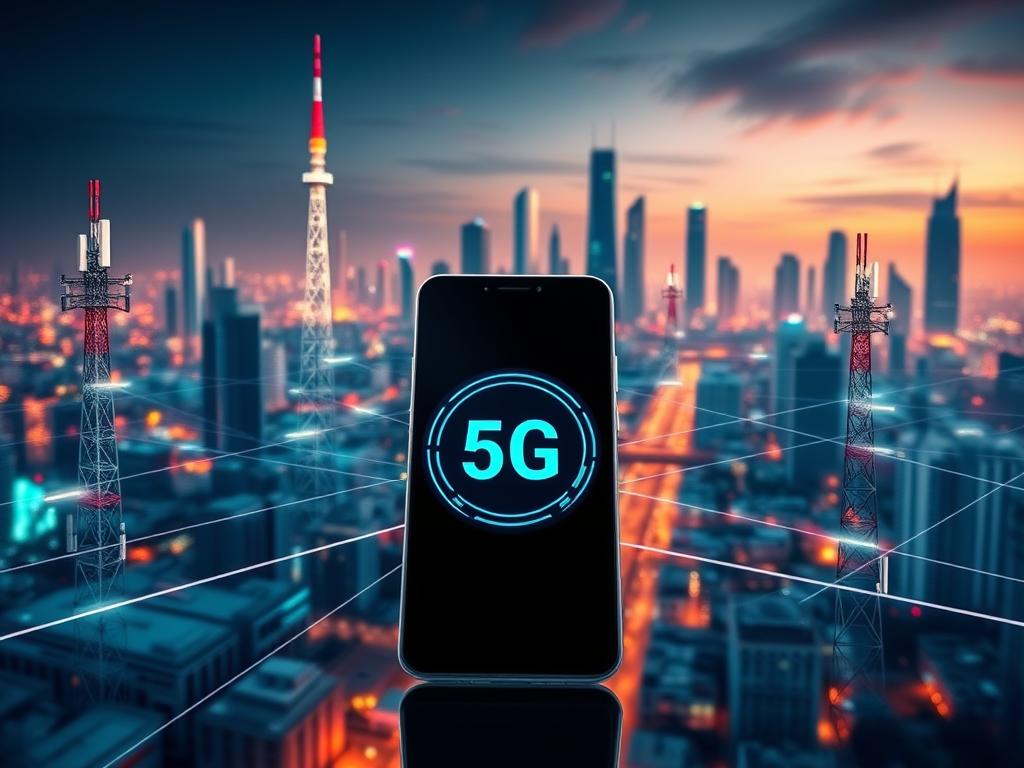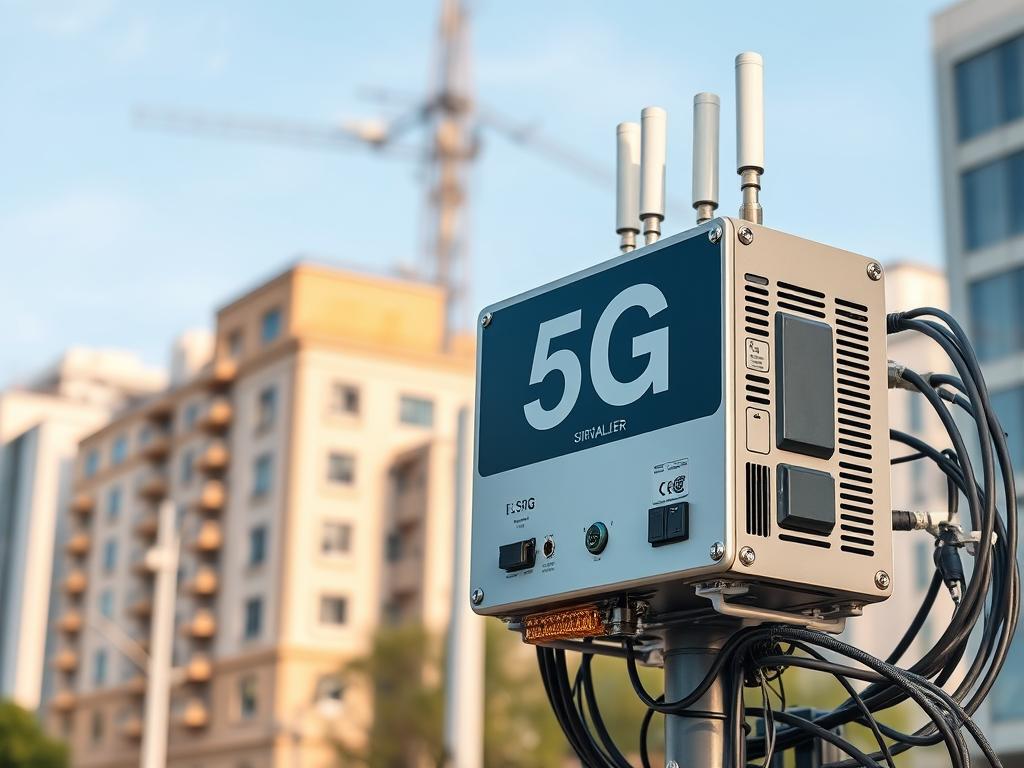Apps para Forzar 5G en Tu Móvil
Advertisements
The 5G connection promises to revolutionize the way we use our smartphones, offering a speed and coverage unprecedented.
But how can you ensure that your device is taking full advantage of this technology? Force the 5G network in your phone may be the answer.
Advertisements
By understanding how it works connection and data are transferred through it, you can optimize your mobile experience.
In this article, we will explore how you can force the 5G on your device and improve your user experience.
Advertisements
Essential Requirements for Using 5G on Your Cell Phone
To take full advantage of 5G technology on your mobile phone, it's crucial to meet certain essential requirements. This includes having a compatible phone, a suitable plan, and good network coverage.
Phones Compatible with 5G Technology
Not all smartphones are compatible with 5G technology. It's important to check if your device is compatible. Some of the latest models from brands like Samsung, Apple, and Huawei already offer 5G support.
Rates and Operators Offering 5G Connection
In addition to a compatible phone, you'll need a data plan that includes 5G connectivity. Major carriers like Verizon, AT&T, and T-Mobile offer 5G plans in various areas of the United States.
5G Coverage Check in Your Area
5G coverage varies significantly between urban and rural areas. You can check coverage in your area using carrier coverage maps or specialized apps. If coverage is a problem, there are solutions such as signal boosters.
In some cases, population density and physical obstacles can affect 5G signal quality. Therefore, it's crucial to understand how the network works in your area to get the most out of your 5G connection.
How to Force 5G on Android Phone
Forcing a 5G connection on your Android device can significantly improve your browsing experience. By following a few simple steps, you can ensure your phone is set up to take full advantage of available 5G networks.
Access Network Settings on Android
Para empezar, debes acceder a las configuraciones de red de tu dispositivo Android. Esto generalmente se hace yendo a "Configuración" o "Ajustes" y luego seleccionando "Conexiones" o "Redes móviles." Aquí, encontrarás las opciones relacionadas con la configuración de tu conexión móvil.
Selecting the Preferred Network Type
Dentro de las configuraciones de red, busca la opción que te permita seleccionar el tipo de red preferida. Esta opción puede estar bajo "Redes móviles" o "Preferencias de red." Selecciona "5G" o "LTE/5G" como la opción preferida para asegurarte de que tu dispositivo se conecte a las redes 5G cuando estén disponibles.

Advanced Settings for Different Android Brands
Some Android brands offer advanced settings that can affect how your device connects to 5G networks.
Samsung
En dispositivos Samsung, puedes encontrar opciones adicionales en "Configuración avanzada" dentro de las configuraciones de red.
Xiaomi
Para dispositivos Xiaomi, ve a "Configuración" > "Tarjeta SIM y redes móviles" y selecciona la red preferida.
Huawei
En caso de dispositivos Huawei con EMUI, el proceso implica ir a "Configuración" > "Redes móviles" y ajustar las preferencias de red. Es importante tener en cuenta que algunos modelos Huawei pueden tener limitaciones específicas con respecto al 5G, especialmente si no tienen servicios de Google. Analizaremos alternativas para optimizar la conexión en estos dispositivos.
- We'll configure 5G networks on Huawei devices with EMUI following the manufacturer's specific steps.
- We'll detail the specifics of Huawei devices that don't have Google services.
- We'll discuss the limitations some Huawei models may have with respect to 5G.
Activating 5G on iPhone Devices
To take full advantage of the speed and capacity of 5G networks on your iPhone, it's crucial to understand how to activate and configure this technology. Activating 5G on your device can significantly improve your mobile experience.
iPhone Models Compatible with 5G
Not all iPhone models support 5G. Compatible models include iPhone 12 and later. Make sure your device is compatible before trying to activate 5G.
Mobile Data Settings for 5G
To activate 5G on your iPhone, go to Settings > Mobile > Mobile data options. Here, you will find the option para activar el 5G. Selecciona "Activar 5G" o "Automático" para permitir que tu iPhone se conecte a redes 5G cuando estén disponibles.
In addition, you can configure the Data mode to manage consumption data. Las opciones disponibles incluyen "Modo de datos reducidos", "Estándar" y "Permitir más datos en 5G". Cada una de estas opciones afecta a la calidad del streaming de vídeo, actualizaciones de aplicaciones y otras funciones.
Battery Saving Options with 5G
Activar el 5G puede afectar la duración de la batería de tu iPhone. Para mitigar esto, puedes activar el "Modo de bajo consumo" en Settings > Battery. This option helps reduce energy consumption by limiting certain functions.
Data Mode and Other Useful Settings
He Data mode on iOS allows you to manage how your devices are used. data en tu iPhone. Al seleccionar "Permitir más datos en 5G", puedes aprovechar al máximo la velocidad de las redes 5G, aunque esto puede consumir más data the next one time.
- Low Data Mode: Limits background data usage.
- Standard: Offers a balance between speed and data usage.
- Allow more data on 5G: Maximize download and streaming speeds.
In addition to setting up Data Mode, you can adjust other settings to improve your 5G experience, such as refreshing apps in the background and setting data limits to avoid unexpected bill surprises.
Apps to Optimize and Strengthen 5G Connection
To improve your 5G experience, there are several apps designed to optimize and strengthen this connection. These apps allow you to monitor and control data usage when using high-speed 5G networks.

Applications to Measure Network Speed and Quality
There are several apps that allow you to measure the speed and quality of your 5G connection. These tools are essential for understanding your network's performance and identifying potential issues.
Some of these apps offer detailed analysis of download and upload speeds, as well as network latency.
Tools to Locate Areas with Better 5G Coverage
Apps that help you locate areas with better 5G coverage are very useful, especially if you're in areas with variable coverage. These tools allow you to find the best location for optimal 5G connectivity.
Some of these apps use community data to provide up-to-date information on 5G coverage in different areas.
Apps to Manage Data Consumption on 5G Networks
Managing data usage is crucial when using a high-speed 5G connection. Apps designed for this purpose allow you to set data limits, analyze which apps consume the most data over a 5G connection, and restrict them if necessary.
Additionally, some of these apps can automatically compress data or reduce streaming quality to optimize usage. You can also schedule heavy data usage for specific times of the day.
Troubleshooting Common 5G Connection Issues
5G connectivity is the future, but what happens when it doesn't work? 5G connectivity issues can be frustrating, but there are several solutions you can try.
What to Do When 5G Doesn't Work
If your device won't connect to the 5G network, make sure your data plan allows it and that your phone is compatible. Restarting your device or resetting your network settings may resolve the issue. problem.
Tips for Users in Rural or Low Coverage Areas
In areas with poor coverage, you may experience difficulty maintaining a stable connection. Using a signal booster can improve your signal. connectivity.
Using Signal Amplifiers
Signal boosters can improve 5G network reception in areas with poor coverage. It's important to choose a booster compatible with the new generation of mobile networks. Some countries require a card registration to install these devices. In certain cases, amplifiers have evolved significantly in recent years years.

Conclusion
5G technology is revolutionizing the way we use our smartphones, and here we've shown you how to make the most of it. force 5G connection, you may experience significantly faster data speeds. It is crucial to check the compatibility of your phone, fee and coverage before trying to force 5G. The advantages of the 5G network include greater connectivity and better service. Remember to use specialized applications to optimize your experience and take into account the consumption of battery and data.


You may also be interested in